Well, I'm pretty excited because this is my
first post on my
Altered Arts Magazine blog. I have always loved learning techniques and trying new things... so being a part of this talented group of artists is something I'm really looking forward to.
The technique I'm about to share with you is one I've done many times, using different water based inks and dyes. For some time now, I've been wanting to give this technique a try using
Glimmer Mist. Well, today is the day.
LOLTo get started .. here is what you'll need.Rock Salt or Sea Salt: You will get a more defined pattern the larger the salt
pieces. I normally use Rock Salt, but this time I used Sea Salt. It has a more subtle effect, but beautiful nonetheless.
White cardstockGlimmer Mist (your choice of colors)_______________________________________Very Simple. Just sprinkle the entire area of your paper with the salt.
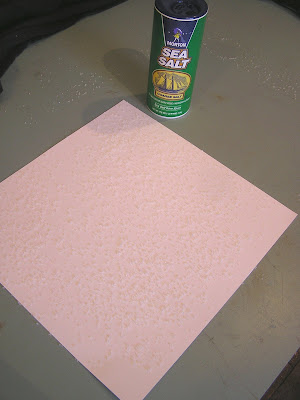
Choose the color(s) you would like to use. Spray the entire area of the paper with Glimmer Mist. (You can also use Walnut ink, Poss Impressions, Color Washes, Watercolors,
etc.)
Saturate the paper. (It works best if you get it very wet.)
Then, either walk away and let it dry... or if you're a bit impatient like I am and want to speed up the process, use your heat gun!
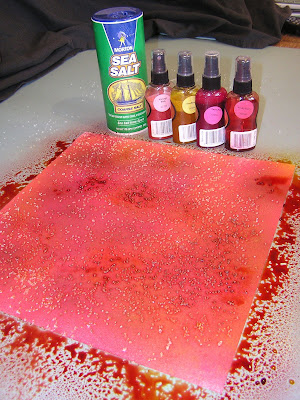
Once you're sure the paper is totally dry, brush away the salt to reveal the beautiful patterns.
Note: It is very important to make sure your paper is completely dry before removing the salt, in order to get the best results.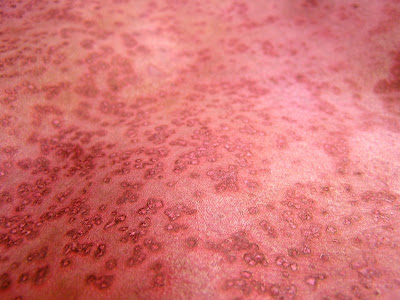
Here's the fun part. Be sure to check both sides of your paper, because sometimes I can't decide which I like better. The photo above is the top of the paper. The photo below is the bottom of the paper when turned over. I really like the look of them both... so.......
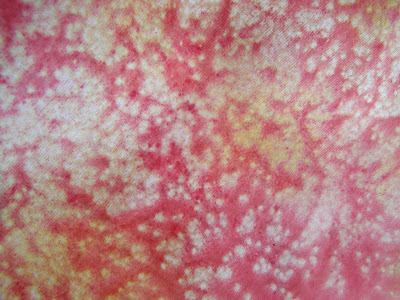
I used them both on my project.
LOL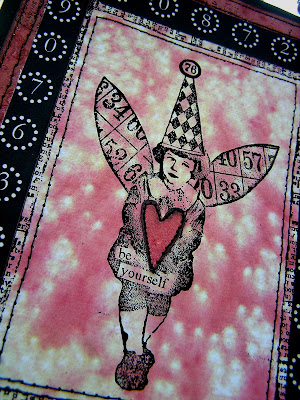
I used the lighter, backside of the paper for the part I stamped on for the center. I used the darker, top side for the base of my project.
 I hope you are inspired to give this a try for yourself. It's a super fun and easy technique
I hope you are inspired to give this a try for yourself. It's a super fun and easy technique!
 1) Lay your screen or stencil down on your paper. Lightly spritz over it with the Glimmer Mist, covering the entire area of the paper.
1) Lay your screen or stencil down on your paper. Lightly spritz over it with the Glimmer Mist, covering the entire area of the paper. You can use multiple colors if you wish.
You can use multiple colors if you wish.




 (You can use plastic stencils or brass stencils for this technique.)
(You can use plastic stencils or brass stencils for this technique.)




































